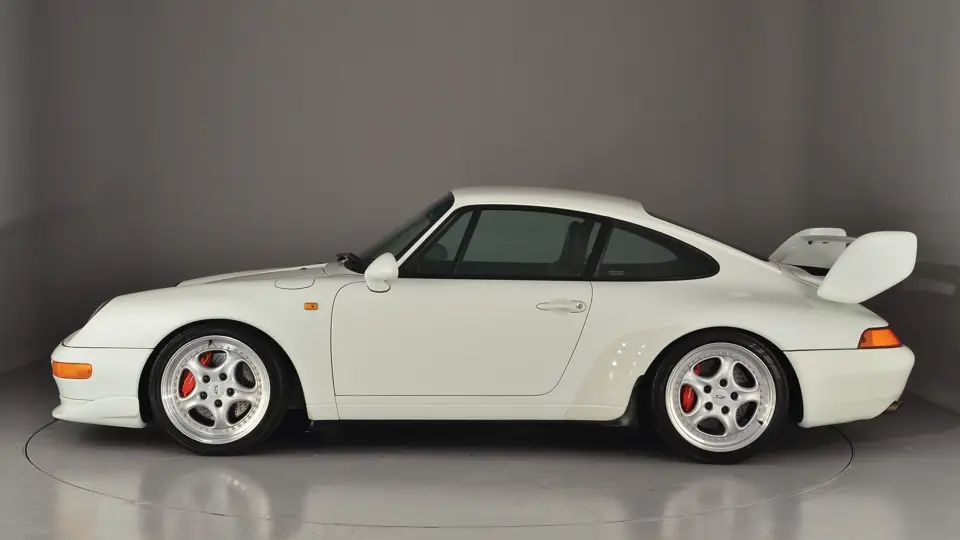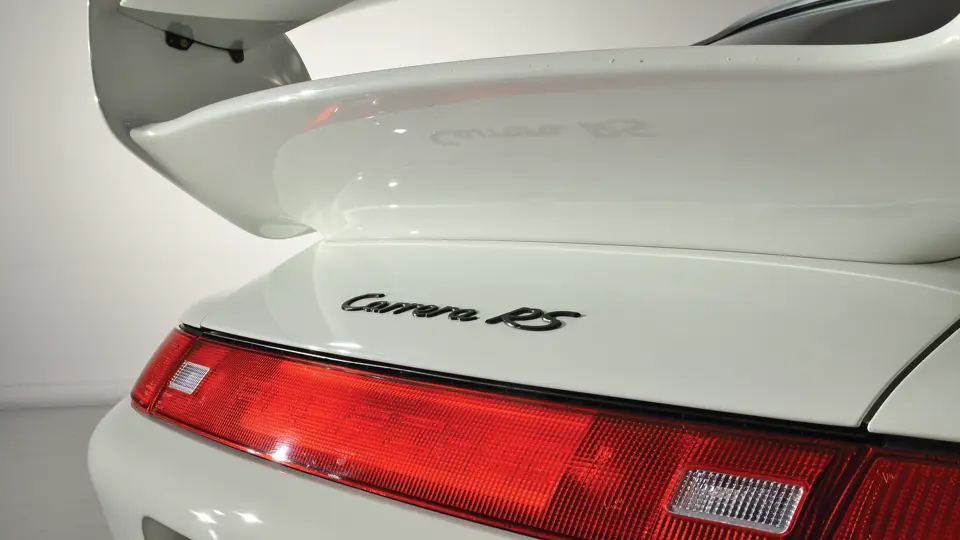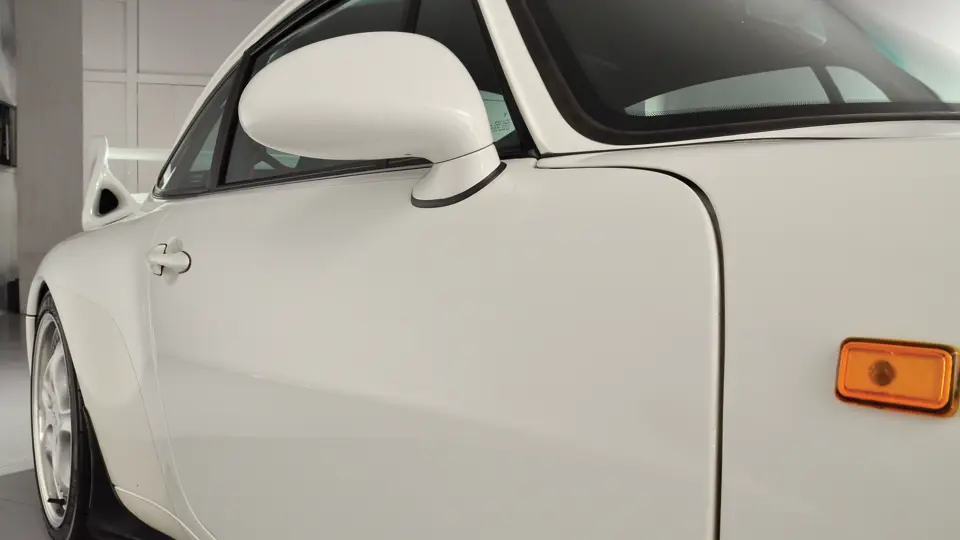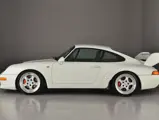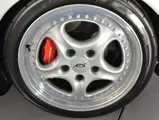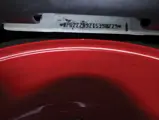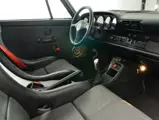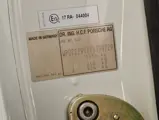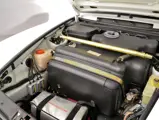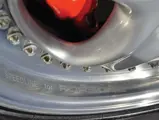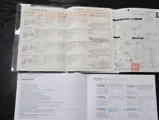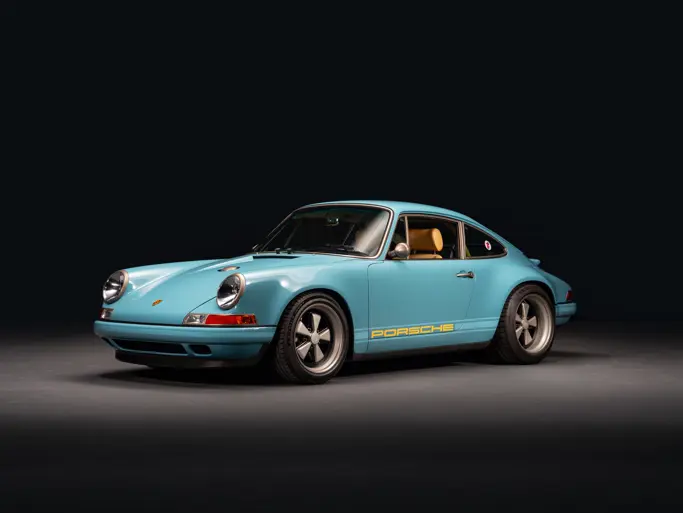Type 993. 300 bhp, 3,746 cc air-cooled horizontally opposed six-cylinder with Varioram and Motronic engine management, six-speed manual transmission, independent front suspension with McPherson struts, Bilstein coil-over dampers, and an adjustable anti-roll bar, independent rear suspension with semi-trailing arms, Bilstein coil-over dampers, and an adjustable anti-roll bar, and four-wheel servo-assisted disc brakes. Wheelbase: 2,271 mm
Perhaps the quickest and fastest normally aspirated Porsche 911 produced by the factory to date is the 1996 Carrera RS 3.8, and it is indeed a wolf in wolf’s clothing. There is no hiding the car’s intent, which is to cover ground in a hurry. This extremely rare and desirable automobile was the ultimate evolution of Porsche’s Type 993 chassis, and in turn, it was a step up from the 964 RS. As Porsche historian Karl Ludvigsen wrote in his authoritative Excellence Was Expected, the RS 3.8 was one of several models built to fulfil the company’s grass-roots commitment to GT racing.
It was based on the Carrera Cup competition car and specifically conceived as a homologation special in a great enough quantity (at least 50 units) to qualify it for the BPR GT3 and GT4 categories as the RSR 3.8. It was offered only to the European market and appeared after the original 3.6-litre engine RS of 1992 had gone out of production. The 3.8, says Ludvigsen, represented the first major alteration to the 964’s air-cooled six. The standard 3.6-litre engine of the Carrera RS was bumped up to 3,746 cubic centimetres by an increase in its bore to 102 millimetres, but it still retained the RS’s standard 76.4-millimetre stroke.
This engine, the Type M64/20, was fitted with Porsche’s innovative Varioram variable-length intake system, and with 11.6:1 compression, it produced a very healthy 300 brake horsepower at 6,500 rpm (with a 7,100 rpm limit) and 262 foot-pounds of torque at 5,400 rpm. Ludvigsen also noted that the 3.8 boasted newly designed forged pistons of reduced height and a relocated wrist-pin, both of which helped keep piston weight below that of the base motor. The new engine also featured dual oil coolers and lightened rocker arms. The latest version (2.10) of the Bosch Motronic engine-management system kept tight control over both the twin-plug ignition and the fuel delivery through individual port throttle bodies. A new hot-film sensor replaced the previous flapper-valve arrangement, and at the exhaust end of the equation, waste gasses were fed through a pair of catalytic converters and out the twin tailpipes.
Along with the engine updates, an important component of this competition-oriented machine was to make it as light as possible. The RS was brought down to a svelte 1,280 kilograms by deleting such amenities as the headliner, electric windows, electric mirrors, central locking, intermittent windscreen wipers, radio speakers, power-adjustable seats, a rear defroster, airbags, and sound insulation. Removal of all these bits resulted in an effective weight loss of 100 kilograms. The 3.8 RS package added a number of performance features to the car, which included thinner window glass (reminiscent of that used on the famed 1973 RS 2.7), simplified interior lighting, an alloy front boot lid and doors, lightweight interior door cards, Recaro sports seats, a front strut brace, ball-joint front damper mounts, and adjustable anti-roll bars with five positions for the 24-millimetre front bar and three positions for the 21-millimetre rear piece. There was also a limited-slip differential, an anti-lock system for the 993 Turbo brakes with “Big Red” callipers, ABD traction control, and bodywork, which included a large adjustable fiberglass Sport Group 1 rear wing with ram-air intakes in place of the modest fixed tail spoiler that came on the lesser RS.
There are also special rocker panel fairings and small winglets at the front corners of the deeper front spoiler, both of which were shown in wind-tunnel testing to assist in guiding air past the wheel openings, and air ducts are present in the nose to assist with brake cooling. Many examples were fitted with positive-latching external hold-down clips on both their engine lids and front bonnet lids. Inside, the cockpit boasts drilled pedals and an additional dead-pedal, a centre storage console, a 930 S-style steering wheel, and an emergency ignition shut-off.
Its power is delivered through a Type G50/31 six-speed manual transmission, with its gearing optimised for acceleration rather than top speed. Immense 265/35ZR-18R tyres in the rear and 225/40ZR-18 tyres in the front are mounted on specially made 18-inch “Speedline for Porsche” three-piece, light-alloy wheels with magnesium centres, which are 9-inches wide in the front and 11-inches wide in the back.
Some of the RS 3.8s were ordered with various creature comforts by purchasers who planned to use their cars primarily on the street, and this fine example is amongst them. Chassis 390729 is one of only one thousand fourteen factory-built RS 3.8 Coupés, and after it was delivered new to Hamburg, Germany, it was exported to Japan. It was finished in Grand Prix White (P5) with a Black leatherette interior, and it was fitted with a higher-amperage battery, automatic air conditioning, electric windows, and Bridgestone tyres. It is supplied with its registration documents, correct manuals, and service records, which date back to 1997 and confirm that the car had been driven just 56,000 kilometres by its Japanese owner. This 911 has recently returned to Europe, and the odometer now shows just over 57,000 kilometres.
This beautiful example offers its next owner a stunning package of exciting looks and thrilling performance, and it would make a wonderful addition to any serious collection of Porsche automobiles.
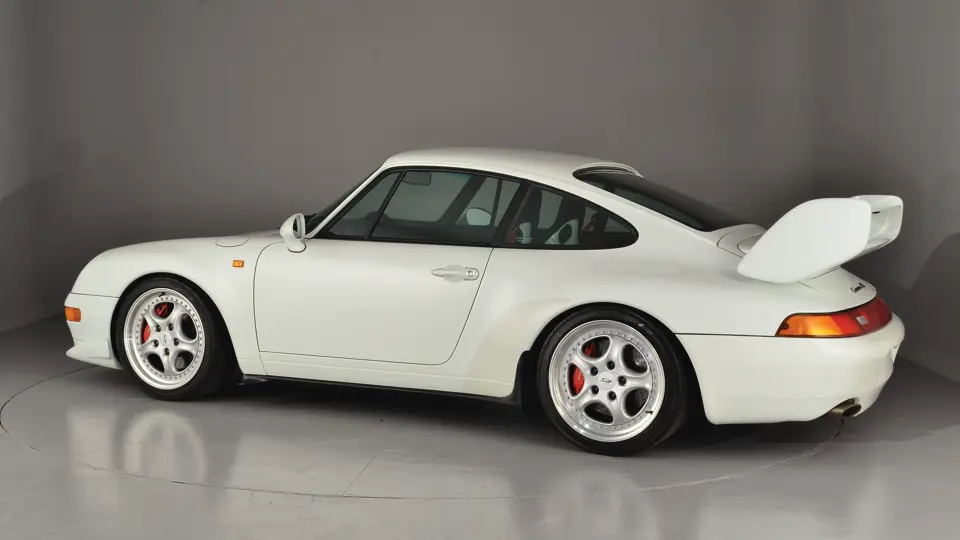
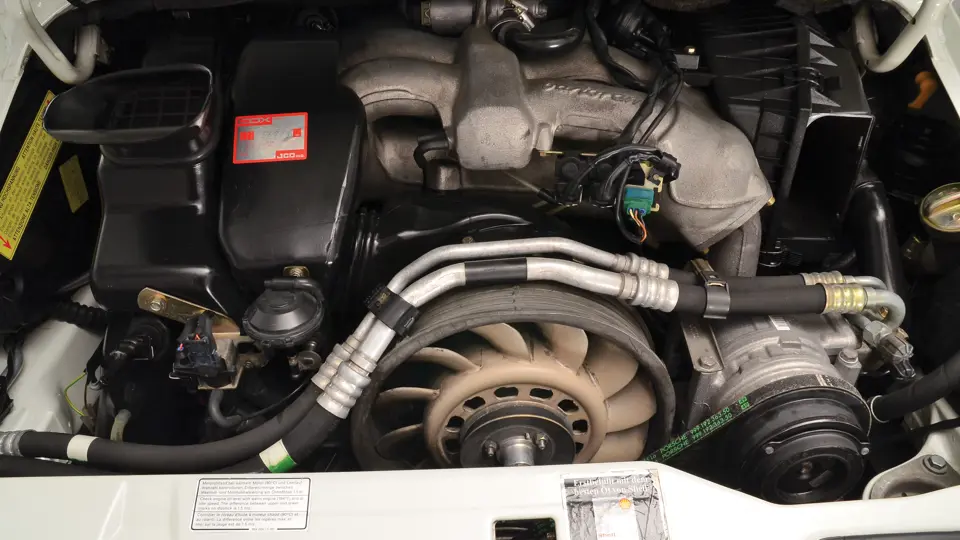


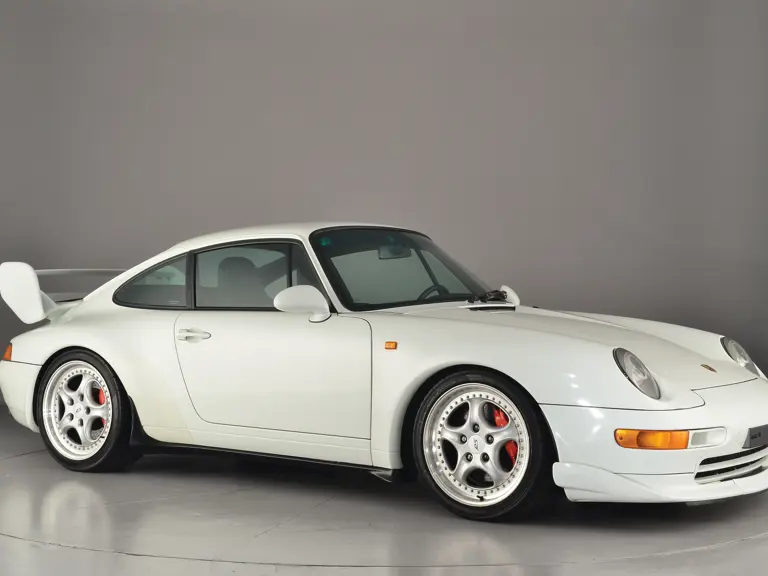
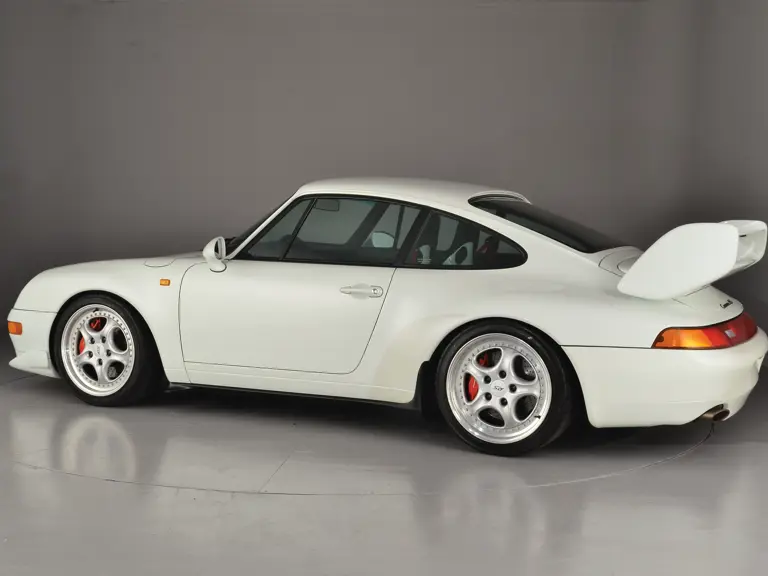
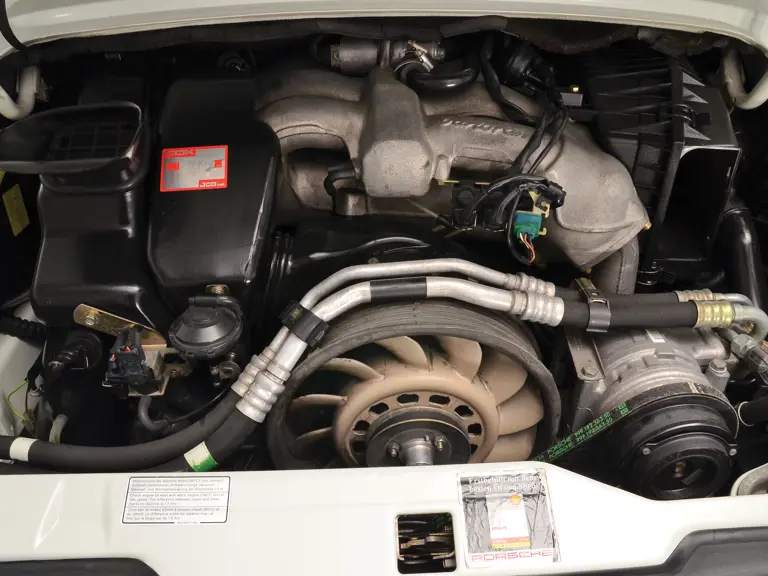


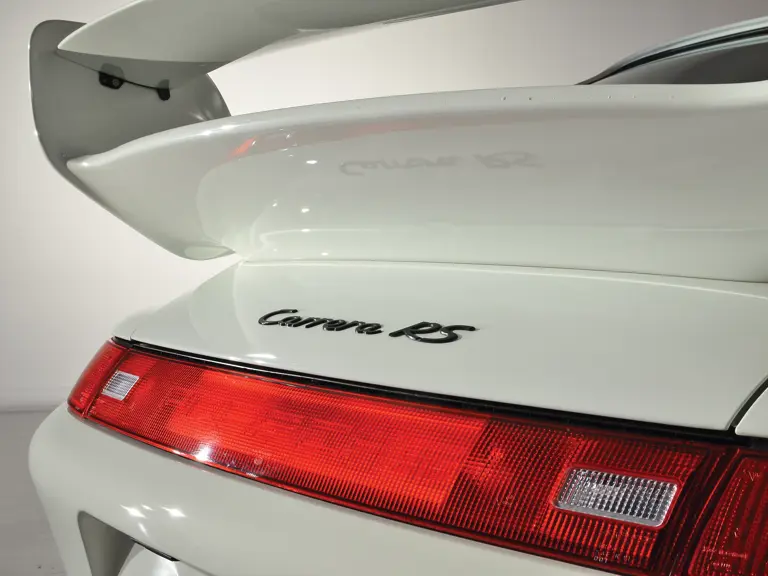
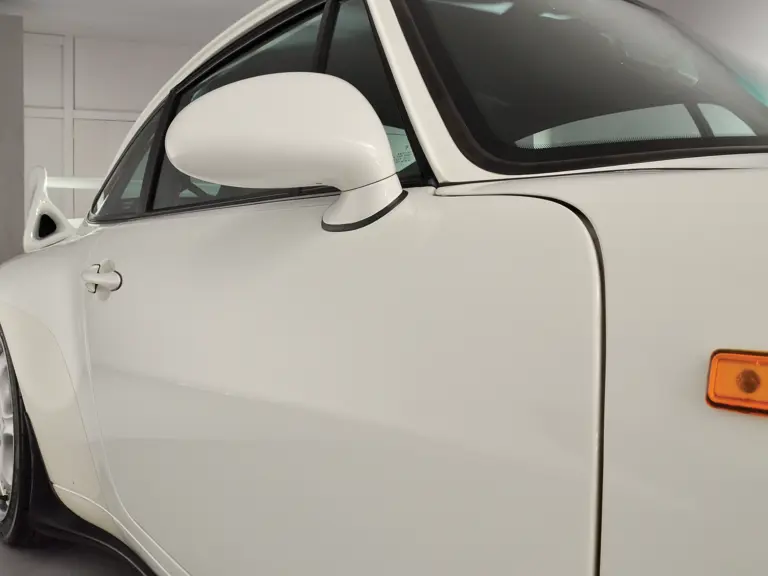

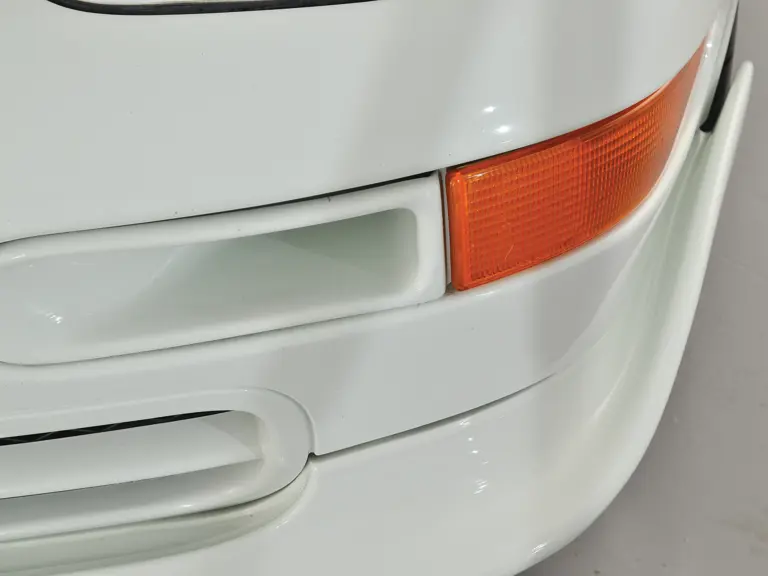

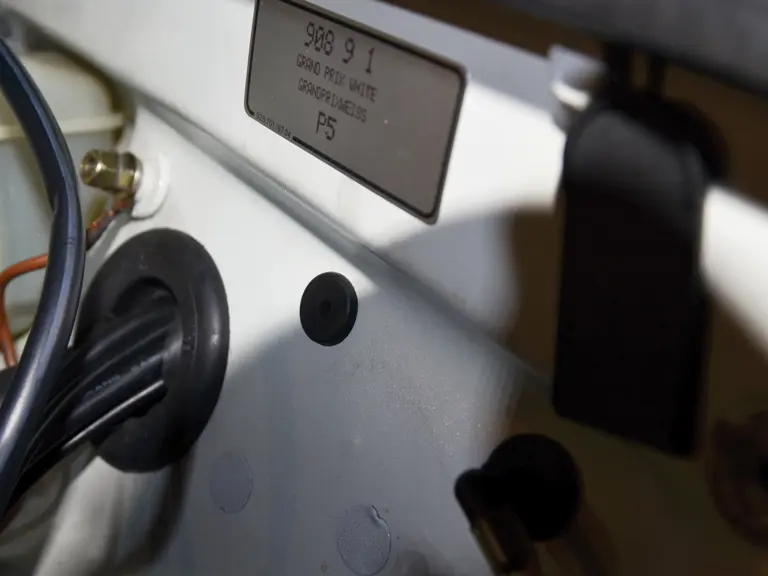
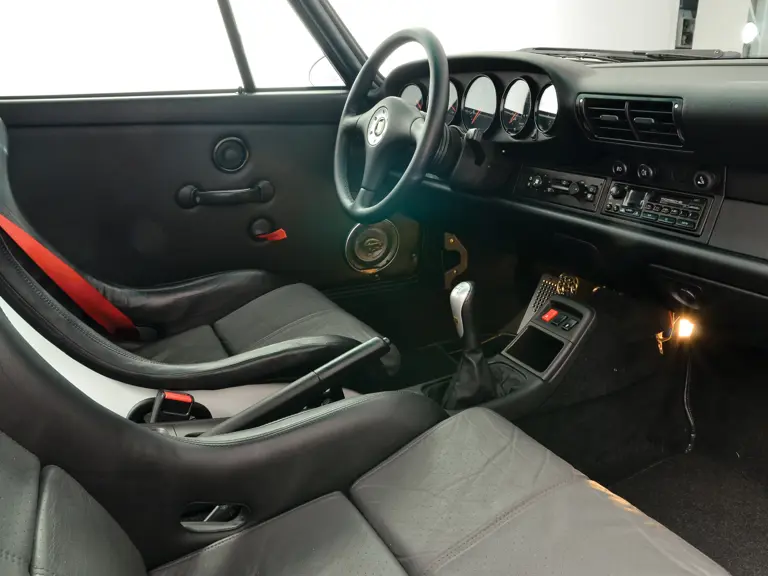
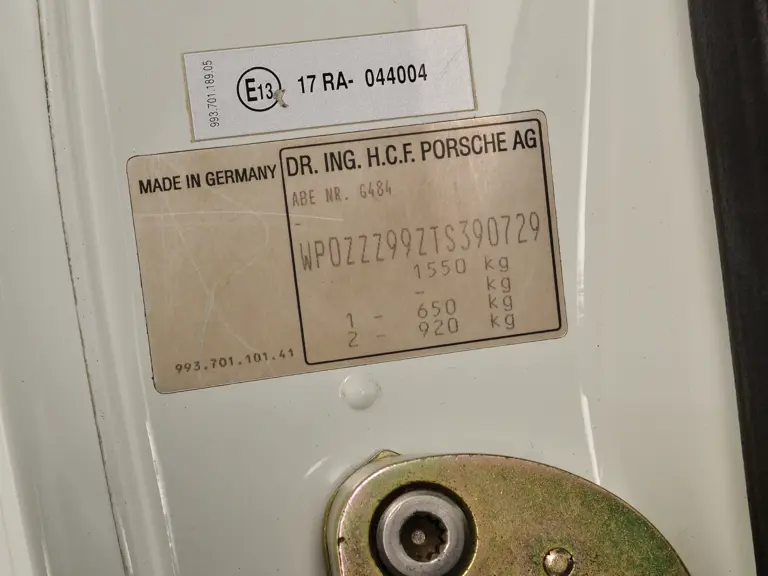
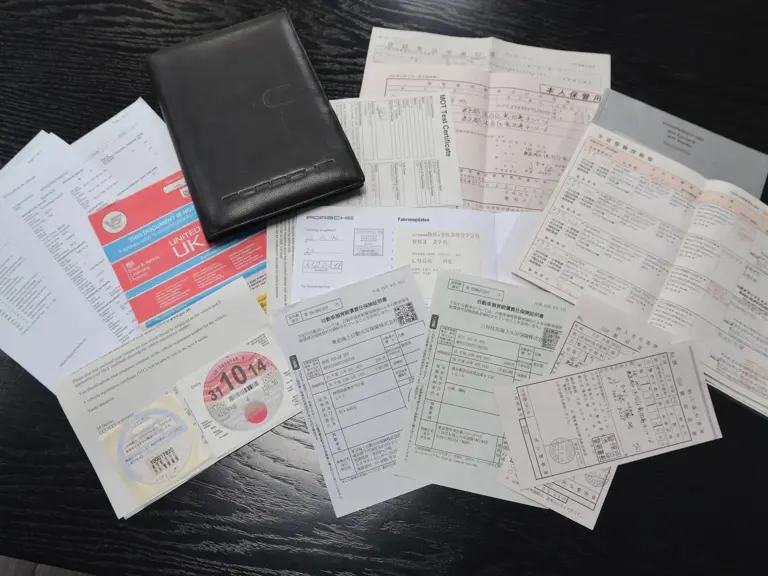



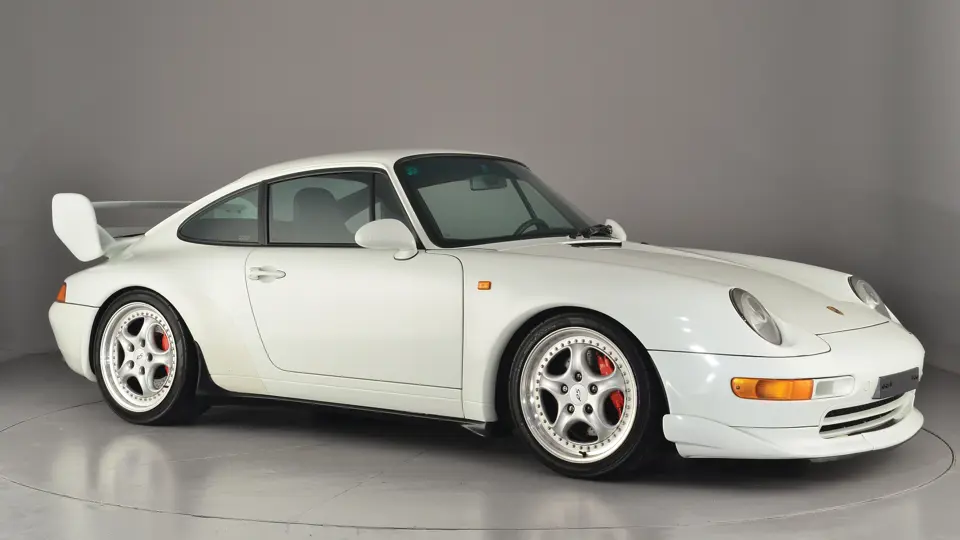
 | London, United Kingdom
| London, United Kingdom
